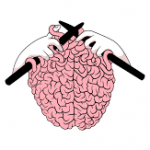
Blog Entry Ten: April 10, 2022
In my initial Blog, I intended to inch closer to an understanding of human behavior within the social world. To understand biases and perception of others to enrich my knowledge as a research psychologist. The reality of what I gained from my last semester in my undergraduate degree can be seen as the missing pieces to a much larger puzzle. Up to this point I relied on personal experience to describe human behavior. Much to my surprise I engaged in pluralistic ignorance and suffered from optimistic thinking. The ability to admit how clouded my perception of the world fuels the next chapter of my academic career, where I have much to learn and a lifetime of learning to go.
I feel as though I have successfully been able to apply the knowledge gained from this semester to assist the academic goals I have set for myself. Throughout the semester I procured knowledge within the classroom, which I then applied to previous theories and coursework. Instead of learning the coursework material for an Exam, I can applicably apply it to real life settings to understand others’ current and past behavior, to recognize the how and why to others behavior.
The social perception of myself and others’ interaction with the social environment has been altered by taking social psychology. The idea that we are a product of social learning, associate with others of similar cut, and are driven by the need for affiliation. Most importantly how we interpret interactions (thoughts, affect, and behavior) are interconnected; changing one can change everything. Social Psychology has truly given me freedom from ignorance and the ability to acknowledge and appreciate myself and others.
If I had to do things differently, I would have signed up for Social Psychology a lot sooner than my final semester. The knowledge gained in this course could have saved me from a lot of heartache in the past BUT, I am grateful I know now. That is really all that matters.
Over the last few months, I have grown academically by being able to connect past constructs and use social psychology to hold it all in place. Knowing theories and hypotheses is great but conceptualizing the why behind behavior is far more rewarding. Moving forward and using what I have learned to connect abstract ideas to human behavior will help me throughout graduate school.
At the beginning of this semester, I was hoping to be admitted into ODU’s Health Psychology Program. I have recently accepted an offer for admission for the summer semester of 2022. The knowledge gained from this course ties together all of psychology. An individual does not exist in a social vacuum and can be influenced by many factors. Being able to recognize internal and external variables will be valuable as I continue to study human behavior.
Blog tens visual representation was chosen to represent the applicable use Social Psychology has to understanding behavior. Social Psychology are interconnected constructs woven together to gain insight into behavior, as opposed to erroneously concluding psychology builds on top of each other. This semester taught me more than I could have imagined, preparing me for the challenges that lie ahead.
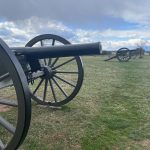
Blog Entry Nine: April 01, 2022
The self-knowledge I gained throughout this semester has helped me gain insight into others and myself. Insight into self-aid in the understanding of my social interactions. How I define myself in various situations in the personal-versus-social continuum. My Emotions, moods, thoughts, social situations, and perceived social norms (explicit or implicit) influence behavior toward others. Relying on one process may trigger the use of heuristics which could potentially lead to erroneous beliefs, ignorance, or prejudice.
The personal-versus-social continuum suggests how our identification within a social context can affect our responses to others. Identifying at the personal level (intragroup) we see ourselves with distinctive attributes outside of a social group. When we identify at the social level (intergroup) we see ourselves as having shared attributes within a group. Depending on how we define the self in a setting can bring us either closer or more distant to others. If I were to identify with others at an intergroup level, I would perceive others with dissimilar traits as outgroup members. Depending on my emotions at the time (fear, anger, or envy) can drive me to treat the outgroup member with prejudice.
This brings me to how affect (emotions/moods) shapes thoughts which guides overt behavior. Feelings are internal processes composed of emotions (how I perceive the world around me with constructed distinct images) and moods (dependent memories can be positive or negative). My current affect can shape cognition; how I think, process, store and remember various pieces of information. Moreover, the interplay between thoughts and affect works in a reciprocal manner. The interplay between affect and cognition occurs by one of two processes: controlled or automatic manner. Thoughts are considered controlled by logically weighing out the pros and cons of an action. Automatic processing occurs quickly in an intuitive fashion, emotionally charged, and takes little cognitive effort. A person engages in social judgement (deciding if we like someone or not) triggering mental schemas which are reliant on heuristics.
A heuristic are short cuts individuals use when making complex decisions or inferences for social stimuli (people, places, and things). Of the four heuristics (e.g., representativeness, availability, anchoring and adjustments, and status quo) the two that tie this whole piece together are representativeness and availability. When representativeness is used to make social judgments, we rely on protypes (similarities another person has with a particular group). Which could mean the evaluator is using a group essence (specific traits/characteristic of a group) to draw conclusions about the evaluatee. The evaluator is also using available information easily recalled when drawing a conclusion. The individual’s automatic processing (use of a heuristic) in the social situation is influenced first by their self-identification then by their affect, which guides their response.
The above concepts can be applied to the Takeaway Three post entitled “Emotions, Thoughts, Action Can be Taken to the Extreme” on Michael Richards’ outburst towards a heckler. During the chaotic event, Richards’ attitude to behavior process model were activated by the heuristic representativeness. Richards’ attitude (evaluation about the social environment) simultaneously galvanized his perceived social norms of engaging in prejudice behavior. Therefore, Richards’ response to the social situation can be explained through identifying as a group (Caucasian men) then using little cognitive effort to control his negative emotions. The anger he felt led to his attempts to inflict harm towards the heckler by using racial slurs. This process automatically occurs because of either social learning in early childhood or in adulthood through institutions and/or the social environment.
In theories of personality course, psychologist Albert Bandura developed the Social Learning Theory by coupling classical conditioning and operant conditioning. Bandura’s theory suggests individuals learn through modeling the behavior seen in our environment. Due to an individual’s innate need to be affiliated and accepted by others, who are similar to us. Moreover, an unconditioned stimulus becomes conditioned response where the overt behavior becomes rewarded (i.e., praise or laughter). The individual then takes this previous experience, and it becomes an automatic response to the social world. However, how the individual defines themselves in the social situation and perceives social norm to treat others of a differing race is key to the initial response.
The image entitled Battlefield Manassas were chosen because it symbolizes figuratively and literally the first shots taken in a war rooted in racism, discrimination, and dehumanization. Which is to this day still being fought in some form or another across a broader spectrum of the entire world. Will the solders of this battle ever put their weapons down? The answer lies within the individual.
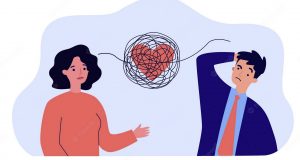
Clicking on this caption redirects you to the website where the image was originally found. www.FreePik.comBlog Entry Eight: March 27, 2022
Evolutionary Psychologist David Buss’ research suggests men and women’s biological evolutionary instincts of reproduction and survival are innate influences in explaining human behavior. To ensure a male genes’ survival it was imperative to reproduce (sex), provide (shelter and food), and fend off competition (animal and human). While a woman’s mechanisms for survival were reproduction, which leads to bearing children, then caring for offspring, and at times gathering (fruits, nuts, and the like). How, from an evolutionary standpoint, do these survival instincts translate to modern partnerships, needs, and behavior? According to Buss, finding a mate is merely the creation of a(n) entire new set of problems (i.e., sexual conflict). Sexual Conflict occurs when both men’s and women’s ideals, beliefs, and values are in opposition of one another. The need for affiliation is a basic instinct both men and women need; influenced and evolved though a lifetime of experiences. Each individual has their own ideas of what is and is not acceptable behaviors within the relationship. To overcome sexual conflicts, individuals entering into a partnership should discuss their perception of what implicit and explicit social norms are. Implicit social norms are informal unstated social rules within the relationship, whereas explicit are formal stated expected behaviors. But if neither of these social norms are discussed how would the other person know them? What could be seen as an explicit norm to one person may be a foreign concept to another. Let us dive a little deeper into which behaviors can be upsetting to partners when rules are not clearly established.
Some women will erroneously engage in pluralistic ignorance (belief that others share the same beliefs, attitudes, or behaviors) which can be counterproductive to a relationship and upset men. To resolve the sexual conflict men could communicate with their partners their feelings, thoughts, and needs. Self-disclosing could lead to being better understood rather than being told their “feelings.”
Communicating and self-disclosing with your partner could bring attitude clarity to yourself and others by gaining insight into what is realistically felt. Moreover, when your partner is aware of how to fulfill their partner’s needs and happiness it creates intimacy. It gives the individual an opportunity to decide if they are able and willing to provide for their partner’s needs in a long-term commitment. Which has the opportunity of opening the door to having uncomfortable conversations in the future. Rather than selectively avoiding topics incongruent with an individual’s views.
Buss offered psychology an awareness of human’s innate behavior to adapt and evolve within their environment. But does it overlook the importance of communicating about social norms, both implicit and explicit? Biologically yes, we each need to affiliate with one another but how well we communicate and systematically process our partner’s needs (physical or emotional) is often implicit and expected to be known. The truth is, unless you or your partner are mind readers then you may be entering a union under false pretenses of who you think your partner is.
The visual aid I choose to represent the importance of communication in a relationship is an image of a confused-looking couple. In the middle is a heart that is surrounded by a tangled thread of miscommunication. Couples can avoid sexual conflict by communicating their wants, needs, and expectations before entering a relationship. Many times, people engage in pluralistic ignorance by assuming their partner has the same values. When we stop assuming and start asking, relationships become easier.

Blog Entry Seven: March 20, 2022
Self-Regulation and Emotional Intelligence are connected to an individual’s ability to distinguish between both emotions and thought processes. Being able to identify the underlying emotional response in situations helps regulate our thought processes. Identifying the emotion and the ability to regulate thoughts is Emotional Intelligence, allowing us to self-regulate. An individual who can understand their emotions and cognitive response have the capacity to approach both internal and external stimuli in an appropriate manner.
Emotional Intelligence is personally relevant because it provides self-insight and the ability to acknowledge my emotions, judgments, and evaluations I have about both internal and external stimuli. The valuable insight plays a powerful role in my behavioral and cognitive response towards myself and others. To this end I can evaluate per-existing thought patterns; negative emotions or feelings can be identified then changed.
A major downfall I have is my need to strive for perfection, which interferes with the expectations I have of myself and others. When I am unable to complete my optimistic To-do list, in the past I would be negative towards myself which makes me feel worse. Instead of being stuck in an endless cycle of self-deprecation, I decided to take action to change. Which involves taking time to realign my body, emotions, and thoughts through my practice of yoga. Every day, three times a day (morning, mid-day, and the evening), I take time to reconnect with my breathing. After a few yoga poses I can identify my emotions. Then at the end of my practice I can continue taking on the day, remain present, interact positively with myself and those around me, and remind myself that I am only human.
Practicing yoga has really had a significant impact on my life and social interactions. For this reason, the visual image I have selected for this week’s blog is an image of my practice. If you are struggling with your emotional intelligence and self-regulation, I recommend trying something different, maybe even yoga! The practice of yoga draws the attention of the yogi inward by evaluating what does and does not serve your best interest. In addition, it is also a great total body work out, which is good for your physical and mental health. I have also included a YouTube video below, so check it
Blog Entry Six: March 4, 2022
Sex Sales!
Jean Kilbourne’s Ted Talk on The Dangerous Ways Ads See Women is an accurate description of the media’s objectification of women. The link to the Ted Talk is found below if the reader is unfamiliar with the video. When I was growing up, Seventeen Magazine and Cosmopolitan were a part of everyday life, just as social media is today. The advertisement in the pages of the magazine conveyed to a young, impressionable adolescent what was and was not socially acceptable. The media sells the idea to women that they are not perfect and need to change to be more sexually attractive to their partner. If your image does not mirror what the magazines consider socially acceptable, do not fear- they sell the solution! When advertising to men, the media sells sex and creates a schema of women as objects. These separate but equal ideas have the potential to lower self-esteem in women and raise expectations of men. Which dehumanizes women and sets back the feminist gains of the last century. Kilbourne in the Ted Talk suggests it will take men and women speaking out against the objectification and stereotyping of women to sell products.

Blog Entry 5: February 27,2022
There are many sources to access information and products being marketed. How do you know which are credible, not-credible, or attractive endorsements? And which ones work best?
Please be aware the pictures used in Blog 5 are not my own. By clicking on any of the three images readers will be redirected to the original online source; links are also included in the references area below.
The World Wildlife Foundation: Credible, yet Fearful.

The World Wildlife Foundation (WWF) foundation of credibility is built upon honesty and expertise. Factors influencing the credibility of the WWF are the experts employed to continue researching and tackling global issues for 60 years in 1) Climate 2) Forest 3) Marine life 4) Sustainability and 5) Science. The organization Scientists is transparent about where expenses are spent and where they receive their revenue. However, the WWF often employs fear tactics, which can cause individuals to look away then be motivated to take action toward changing their behavior.
Prevagen Graph: Not-Credible, Misleads Consumers.

The Advertising Prevagen’s uses for their dietary supplement to Improve Memory are not credible due to the proven effectiveness visual images. Moreover, the drug company has a vested interest in selling their product. The visual images of graphs are skewed (e.g., bars are extremely stretched out and the left side of the graphs are missing numbers). At first glance, the graph appears to be scientific in nature and may influence older consumers.
J-Lo Celebrity Endorsement: Gets you, Every time!
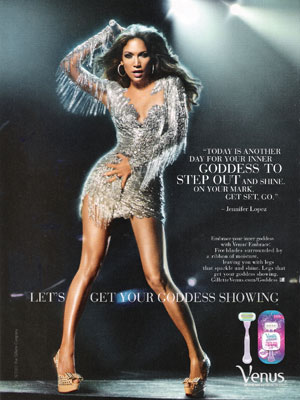
JLO Advertisement Ad for Venus razors where the Ad reads: “LET’S GET YOUR GODDESS SHOWING.” Before reading the advertisement, the image read: “GET LEGS LIKE JLO- WITH VENUS!” I immediately wanted to go out to purchase a Venus Razor. The reason I was influenced by the advertisement is simple 1) My admiration for JLO as a successful Latina woman 2) the advertisement is not trying to change my attitude rather, attain a goal 3) The Jennifer Aniston Neuron. The first two points were self-explanatory. However, ‘The Jennifer Aniston Neuron’ requires further explanation, this certain brain neuron responds rapidly to familiar and attractive stimuli that may influence behavior (Kubska et al., 2021). The mechanism behind the Jennifer Aniston Neuron is beyond the scope of the blog and may be revisited at another time. The point is the brain is automatically processing attractive new stimuli and associating it with known information, leaving us more open to persuasion.
References
Celebrity Crunch, (2011). Jennifer Lopez For Gillette Venus Campaign. [Photo]. Celebrity Crunch. https://www.celebcrunch.net/2011/06/jennifer-lopez-for-gillette-venus.html
The Federal Trade Commission. Prevagen TV ad chart. [Photo]. FTC, New York. https://www.ftc.gov/news-events/press-releases/2017/01/ftc-new-york-state-charge-marketers-prevagen-making-deceptive
Gerbaux, J. (2015). WWF-Global Warming [Photo]. Bēhance. https://www.behance.net/gallery/23298157/WWF-Global-Warming
Kubska, Z. R., & Kamiński, J. (2021). How Human Single-Neuron Recordings Can Help Us Understand Cognition: Insights from Memory Studies. Brain Sciences, 11(4), 443.
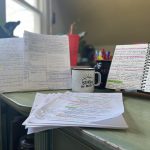
Blog Entry Four: February 20, 2022
How I Learn To Absorb Information
I have learned when I take an exam, the right answer is usually the one that automatically comes to mind. I tend to second guess my initial answer through controlled processing. Second guessing my initial answer can be attributed to over analyzing the question and information being asked. I need to have more self-esteem when taking Quizzes and Exams to maximize my potential.
My learning style involves taking handwritten notes during the reading portion, then stopping to use real life examples to comprehend course material. After providing myself with examples throughout the chapter, I will then transfer the handwritten notes to Microsoft word by typing the information or dictating the notes.
If or when the professor provides the students with an Exam study guide, I will space out the review process by two chapters every other day. This allows me to go through my handwritten notes, word documents, and PowerPoint material to compile a study guide.
After reflecting on my study habits and test taking ability, I believe it can help me attain a higher score on future Exams. By not second guessing myself and having more confidence in my initial answer. Continuing to use these tools in the future in addition to reflecting on my simple errors can help me be successful in the future.

Blog Entry Three: February 13, 2022
The Soundtrack of My Life
Music has a way of connecting people together. A song’s verse can describe word for word my present emotions, feelings, and thoughts. Friends and romantic partners whom I share a song and/or album with brings our relationship closer. The song is no longer a simple song, but a part of a deeper memory shared. A single artist or a playlist can describe your whole year in a new relationship or past summer. Music can connect you with others who share similar values and experiences.
I have noticed that my friends’ and partner’s musical interests influence which music I listen to complete various tasks. When I am with my friends, we will listen to today’s rap/hip-hop and country genre. Moreover, when I am with my friends we are usually working out and listening to rap and hip-hop to help motivate us. My friends and I share some values and ideals about securing a future for ourselves and working toward achieving our life goals.
When I am sharing a moment with my family we will listen to classic rock. My partner and I are very similar when it comes to our values and ideals. The two of us have had to be self-directed and hard working to achieve a life beyond what we dreamed of as children.
Playlist for Keynote People In My Life:
- Mom- Eagles: Hotel California “Some dance to Remember, Some Dance To Forget.”
My mother was seventeen when she had my sister and I. During this time it was the heyday for Rock and Roll, specifically heavy metal. Though she was a huge fan of Kiss, Bon-Jovi, Black Sabbath, Journey and Cinderella, there is something special about The Eagles Hotel California. Growing up was not easy; the three of us struggled with economic insecurity with nobody but ourselves to rely on. My mom would played this song all the time, while she danced and cooked dinner. In the song Don Henley has a verse, “ Some dance to remember, some dance to forget.” I always felt my mom was dancing to forget and live through this song to take her far away from where she was. The song always brought you back to reality because you can check out from life but in the end you can never leave.
- Murray: Led Zeppelin- Dazed and Confused “Every day I work so hard, bringing home my hard earned pay ”
I had always known of Led Zeppelin the band (and the German air balloon); I did not appreciate their music until my husband and I first started dating. One of the first songs I heard was “Dazed and Confused” and “Good Times Bad Times” by Led Zeppelin. When I heard these two songs for the first time, and even now, I feel like both of these songs tells the story of his life. How he has worked so hard in his past and present to live a life worth living. And the heartbreak he experienced that led him right to me. We have both had our share of good times and bad times, but in the end we have a special bond and love that is endless and always growing. Both of these songs always have a special place in my heart.
- Liam- Ozzy Osbourne– Crazy Train “Maybe it’s not too late for the world to learn how to love and Forget how to Hate.”
Growing up, Ozzy Osbourne’s Crazy Train was one of my favorite songs! After having my son, I truly understood the crazy train life had in store for me. I had to learn how to love and forget how to hate, to heal mental wounds to become a better mother for my son. The beauty and common thread between the song and the arrival of my son is he showed which station to get off on. In addition, when he hears the song he stops what he is doing just to dance and head bang. Then stops and looks at me and says mom! Get up and dance with me!!
- Molly-Midland– Electric Rodeo “ Ain’t got no hometown, We never stop, we just slow down.”
My friend Molly and I met at community college orientation, where I saw her and knew I wanted to be best friends. We would not officially meet until our first class and when she walked in the room, in my head I said please let her sit in front of me. She did and we became the best of friends. After graduating, she went off to Richmond and we remained very close. I went to visit her in Richmond where we went to see Midland in concert. We got there late but somehow made our way to the front by the end of the set. By chance the guitarist threw a guitar pic into the crowd; it bounced off the fingertips of an audience member and landed right in front of me. This song reminds me of that experience; how Molly and I have never felt like we fit in with the world, yet we never stopped building a better life for ourselves while continuing our education, being mothers and partners.
- Vannah- Cardi B– Bodak Yellow- “If I see you and we don’t speak, That mean I don’t mess with you, I’m a boss you a worker, bee.”
Cardi B’s Bodak Yellow describes one of my closest friends Vannah. She knows her worth and is not willing to settle for less. I feel Cardi B describes Vannah in this song. Throughout her life Vannah has always bought her own way and ‘makes money move’ (Cardi B., 2017). The song perfectly describes how independent she has been, rated “10 out of 10 best ghoster” by someone that was interested in her. The characteristics of being independent and being true to yourself and never accepting less than your worth is something both Vannah and I share.
- Me- Billie Holiday – Strange Fruit “Here is a fruit for the crows to pluck.”
Billie Holidays Strange Fruit is a song that reminds me of coming from the southern way of life, with a tendency to knock and keep down people of color. In the 30’s, Lady Day recorded and performed Strange Fruit, a painful reminder of numerous legal lynchings. As a southern woman of color I was regularly reminded I was not white and because of this I would not advance in this life. It was not until I made my way from the deep south and up the east coast where I surrounded myself with women who wanted to rise up and achieve greatness.
References
Cardi B. (2017). Invasion of Privacy. Atlantic.

Blog Entry Two: February 6, 2022
I have a thirst for knowledge which is quenched by my dedication and passion to attain knowledge. It is my belief that I am an exemplary student wishing to continue growing. I am under the belief that it takes hard work and time to put the proper effort into learning. For me learning is more than attaining grades to pass a course. Learning is the knowledge I take with me when the course ends. I will continue to dedicate my time and effort toward this end. When I take a course, I feel it is necessary to delve deep into what is being taught and apply the material to my life.
I have the utmost confidence in my ability to succeed in academia. I believe that if I can think it, I can make it happen. My optimistic attitude and confidence in my ability allows me to dream big and work hard. When I am torn between my responsibilities (e.g., mother and student) I tend to get overwhelmed. I remind myself that I am not a robot or superhero but a human, working to the best of her ability.
My results on the General self-efficacy scale were 3.8, indicating that I implicitly believe in my ability to complete a task. When I find myself under pressure to accomplish a task it motivates me to work harder. During a summer internship I had fallen behind in inputting data for a research project I was working on. It was the belief that I had in myself that allowed me to push through my exhaustion and complete my work. Although this is one of many instances where believing in myself helped me succeed, I am under the impression that if you put your mind to a task you can accomplish it.

Blog Entry One: January 30, 2022
Throughout my time at Old Dominion I have entered each semester with the goal of inching closer to conceptualizing the psychology of human behavior. I expect the knowledge gained from each course to build atop of previous courses to construct a better understanding of humans. To this end, the study of social psychology offers a glimpse of the interrelated relationship of behaviors with the world. Humans are social creatures; their behavior and interaction is an essential component to daily living. Moreover, gaining an understanding of our own biases and perceptions of others is imperative to growth. By studying social psychology I expect to learn more about human behavior, to be a better researcher.
The career aspirations I have set for myself are to become a researcher in traffic safety. I hope to gain practical knowledge to be applied to the field of human behavior. It is central to my education to take classes that are relevant to all humans rather than a specific race or gender. The research field I am entering into regards pedestrians, which includes anyone and everyone walking on roadways. It is my hope to gain knowledge of individuals’ social interactions to explain the why, as it relates to behavior.
The strategies I have utilized throughout my time at ODU involve immersing myself into my coursework. The application of this technique enables me to succeed in the competitive field of academia. By applying knowledge taught in the classroom to real life situations. Physically working with material aids in my understanding of what is being taught rather than simply knowing information for an exam.
